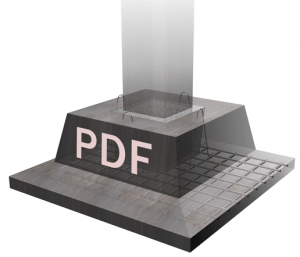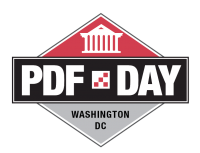
“PDF can do THAT?!”
PDF files deliver a complete package of information that defines a document; everything that’s needed to represent the text, graphics and layout that the recipient receives. To most people, PDF is “electronic paper” – the digital expression of a cellulose page. PDF is that, and it’s much more besides. Although few are aware of the format’s capabilities beyond its ability to replace paper, PDF can do so much more. Let’s look at a few examples: 3D PDF Manufacturing, engineering, maintenance and fa … Read more
PDF files deliver a complete package of information that defines a document; everything that’s needed to represent the text, graphics and layout that the recipient receives. To most people, PDF is “electronic paper” - the digital expression of a cellulose page.
PDF is that, and it’s much more besides. Although few are aware of the format’s capabilities beyond its ability to replace paper, PDF can do so much more. Let’s look at a few examples:
3D PDF
Manufacturing, engineering, maintenance and facilities organizations often need to share data that doesn’t fit onto a two-dimensional page. From CAD data, 3D rendering, video files and more, PDF would be a major frustration if it were limited to a flat, static page. But it’s not.
PDF files can contain all sorts of dynamic information, including movies and 3D content complete with the JavaScript needed to drive user-interfaces. When SpaceX wants to specify a new part for a rocket engine they produce a PDF that contains 3D or video data set right into the page. Attachment to the PDF can convey original CAD files, if necessary, but part of the beauty of 3D PDF is that expensive CAD software’s not required to view and use this information. What’s more, dynamic data may be included within a PDF’s 2D page, allowing the author to provide contextual documentation alongside the 3D model.
PDF technology helps meet the needs of engineering organizations.
Machine-readable PDF
One of the famous complaints about PDF is that it’s where “data goes to die”. This claim arises from the fact that it’s possible (and unfortunately, still typical) to make PDF files that are nothing but pictures, with information such as that contained in tables reduced to glyphs painted in rows and columns. That’s fair, but it’s not the whole story, as ZUGFeRD proves.
Flat PDF invoices are easy for humans to read, but loading the invoice’s information into ERP, accounting or archiving programs is less easy. In contrast, Electronic Data Interchange (EDI) systems can share invoice information between large companies, but the format is incomprehensible to a human. EDI also requires that two companies agree on the data and data-structures to be shared.
By standardizing the use of PDF with an XML attachment for machine-readable invoice data, ZUGFeRD brings the benefits of EDI – lower processing costs, reduced human error, ability to automate processes – within the reach of companies that may only need to process invoices sporadically, or don’t have the resources to implement EDI systems. Using PDF also means that no-one is forced to do anything – if your software supports ZUZFeRD, you get machine-readable invoices; If it doesn’t, you still get the PDF invoice that can be processed just like a paper invoice that arrives via snail-mail.
Case-file PDF
PDF files can contain millions of pages, but there are many cases where documents consist of more than static, printable images. To accommodate these cases, PDF files may contain attachments of any file type, including authoring files (spreadsheets, etc.), databases, video content, XML files, email archives, images… in fact, any sort of file may be attached to a PDF, including other PDF files.
The advantage of PDF over zip files as a “carry-all” for digital content is straight-forward. The “container” PDF acts like an envelope, providing the author with a robust and universally-accepted means of organizing, documenting and presenting… whatever attachments the PDF file contains. Using attachments, a single PDF file can contain all the evidence for a criminal investigation, all the data from a flight-test, a set of clinical records, an email archive, or just about any type of digital content that serves as a document.
PDF can indeed do that!
Not only is PDF extraordinarily powerful and capable, it’s also non-proprietary. As such, any organization can leverage PDF as the basis for their own custom application to record, share, collaborate and archive vital information. PDF technology is available without royalties, without use-limits and without licensing.
There’s a world-wide community of developers standing ready to help implementers with their integration or customization of PDF-based solutions to their business needs. The PDF Association is where you’ll find them.





